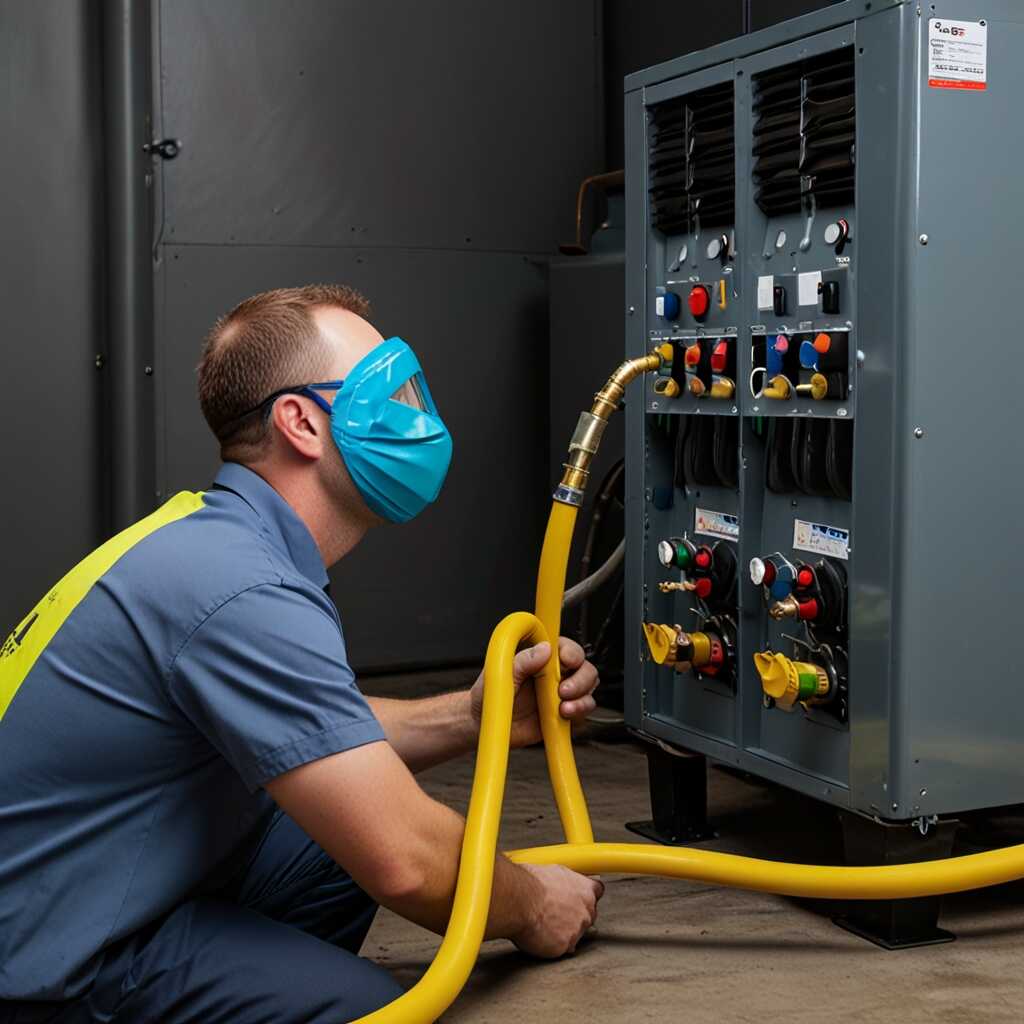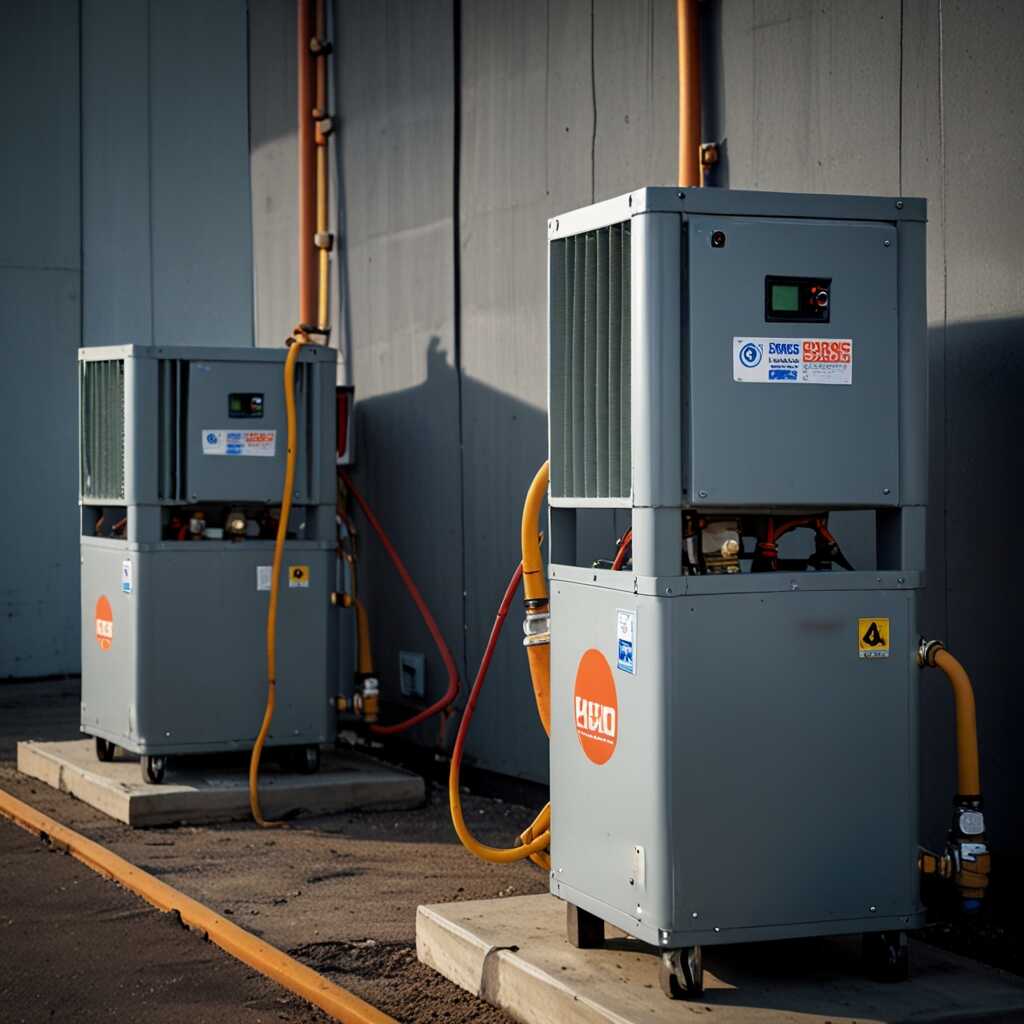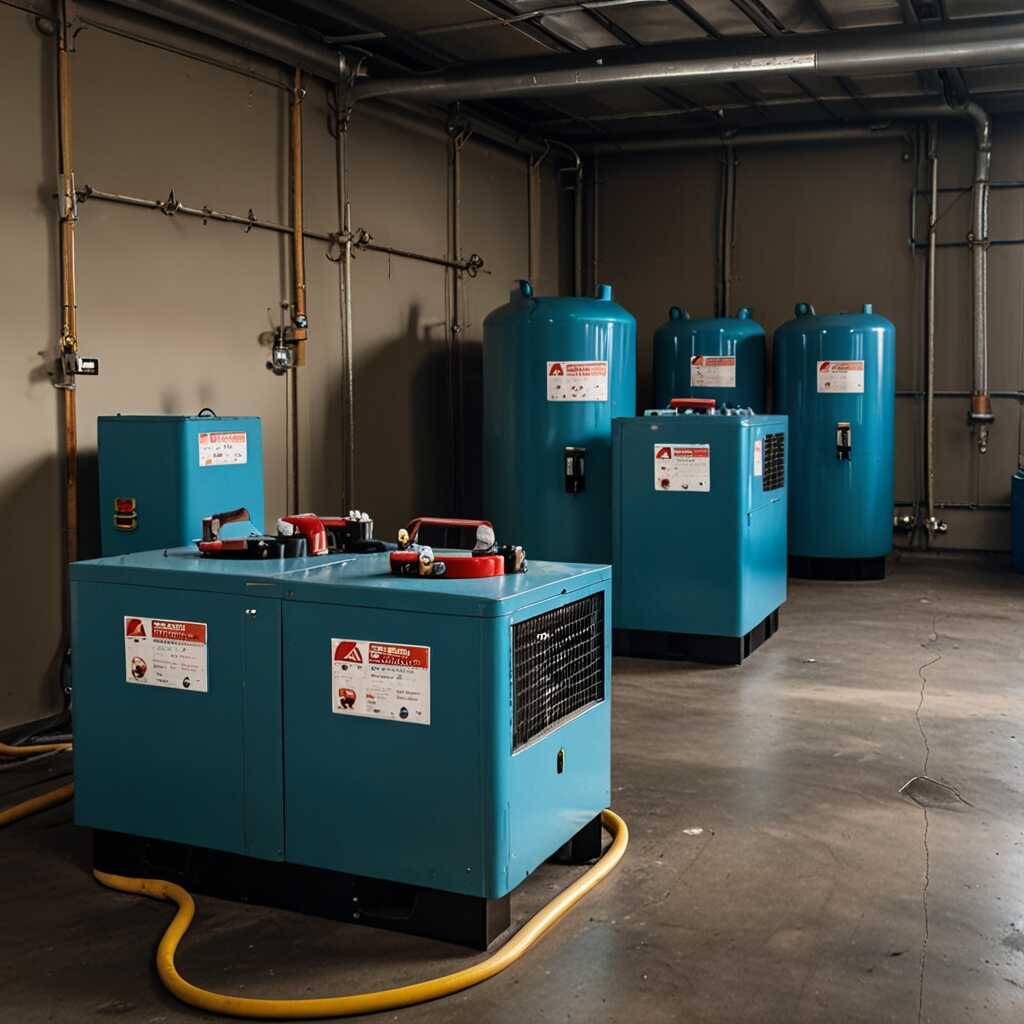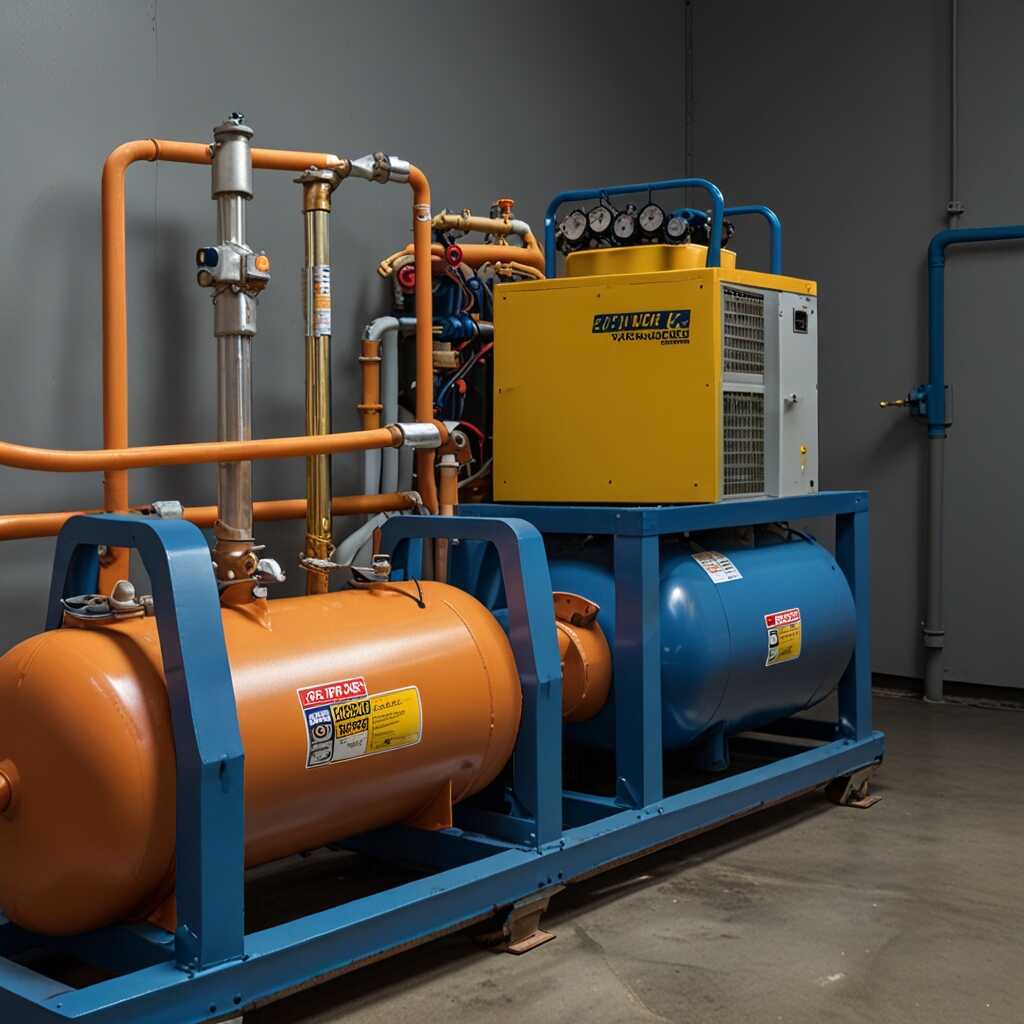Enhancing safety with differential pressure monitoring in refrigerant recovery machines is crucial for HVAC operations. This technology helps prevent hazardous situations during refrigerant handling, ensuring safer environments for technicians. Refrigerant Recovery Pro emphasizes the importance of using advanced recovery machines equipped with differential pressure sensors. These enhancements provide real-time feedback, guiding HVAC professionals in their tasks while promoting compliance with safety regulations.
Introduction to Differential Pressure Monitoring in Refrigerant Recovery
Differential pressure monitoring is a critical function in refrigerant recovery machines. It measures the pressure difference between two points, ensuring safe and efficient operation. This technology is essential for HVAC professionals who want to enhance safety during refrigerant recovery. Users of differential pressure monitoring systems benefit from its ability to detect unsafe pressure levels and prevent potential hazards. The maximum safe differential pressure often recommended is around 5 psi, but this can vary based on equipment specifications and refrigerant types. Proper understanding of this concept improves the reliability and performance of refrigerant recovery processes.
Importance of Differential Pressure Monitoring for Safety in HVAC Operations
Differential pressure monitoring plays a significant role in ensuring safety during HVAC operations. By continuously tracking pressure differences, this system helps technicians identify leaks or pressure drops that may indicate failures in the refrigerant recovery process. This monitoring enables quick response and enhances the overall recovery efficiency. HVAC technicians can rely on these systems to provide real-time data, which supports better decision-making. The reliable monitoring ensures technicians are aware of the system’s performance and can make adjustments before potential issues arise. Overall, incorporating differential pressure monitoring into refrigerant recovery machines enhances safety and operational efficiency.
Key Benefits of Refrigerant Recovery Machines for Safety
Refrigerant recovery machines significantly enhance safety in HVAC operations. They help minimize risks through features like differential pressure monitoring. This technology provides real-time feedback, ensuring safe operation and preventing over-pressurization. Essential safety procedures include regular equipment testing, user training, and adherence to operational guidelines. By implementing these practices, HVAC technicians can prevent potential hazards such as leaks or accidents during refrigerant recovery.
Essential Features Ensuring Safe Refrigerant Handling
Key features of refrigerant recovery machines include differential pressure monitoring and advanced safety shut-off mechanisms. These features help operators detect unsafe conditions instantly. Machines with these technologies enhance reliability, ensuring technicians can handle refrigerants safely. Operational effectiveness improves when equipment includes built-in alarms and pressure gauges. Proper training on these features is essential for all HVAC professionals to ensure they utilize the machines to their full potential.

Role of Technology in Improving HVAC Safety Practices
Technological advancements, especially differential pressure monitoring, enhance HVAC safety significantly. These systems provide real-time data, allowing technicians to detect and address issues proactively. Compared to traditional methods, differential pressure monitoring systems offer increased reliability and efficiency in identifying potential refrigerant leaks. Research indicates that implementing these systems can reduce leak risks by as much as 30%, ensuring safe handling of refrigerants. Addressing safety protocols is essential, especially in complex HVAC operations.
Understanding Differential Pressure Monitoring Benefits
Differential pressure monitoring systems are designed to enhance HVAC safety by providing continuous pressure measurements. This technology enables professionals to detect irregularities quickly, ensuring efficient refrigerant recovery and minimizing environmental risks. By monitoring pressure differences, HVAC technicians can identify system malfunctions before they escalate. This proactive approach vastly improves equipment reliability and helps maintain compliance with safety regulations. The precise data received helps in planning maintenance schedules and ensuring top performance of refrigerant recovery units.
Key Statistics for Safe Refrigerant Maintenance
- Over 80% of refrigerant leaks occur during recovery operations.
- Using differential pressure systems can reduce recovery time by up to 30%.
- Improper handling causes 25% of refrigerant-related accidents each year.
- Estimates show that 40% of HVAC professionals have experienced safety alarms triggering.
- Machine failures can lead to losses exceeding $3,000 in repairs and fines.
- Studies reveal that equipment with monitoring features increases compliance by 50%.
- Only 30% of technicians are fully aware of safety protocols for refrigerant recovery.

Identifying Risks in Refrigerant Recovery Operations
Refrigerant recovery operations present various dangers, including refrigerant leakage, pressure-related accidents, and exposure to hazardous materials. Common dangers include the risk of suffocation from refrigerant displacement of oxygen and chemical burns from direct skin contact. HVAC professionals must implement safety measures like using personal protective equipment (PPE) and verifying system pressure to reduce these risks. Reports indicate that over 50 incidents of refrigerant leakage occurred last year, highlighting the urgency of proper handling. Ensuring the use of reliable equipment, like refrigerant recovery machines with differential pressure monitoring, enhances safety by preventing over-pressurization and ensuring efficient recovery.
Understanding Effective Safety Measures for Refrigerant Recovery
Effective safety measures significantly reduce risks during refrigerant recovery. Using equipment with built-in differential pressure monitoring enables technicians to detect leaks and prevent system failures. Regular testing and maintenance of recovery machines enhance their reliability and performance. It is essential to train all personnel on the proper operation of recovery equipment. Incorporating effective collection bags can also minimize the risk of exposure to harmful chemicals. By understanding these risks and implementing robust safety measures, HVAC professionals can ensure safe and efficient refrigerant recovery operations while complying with industry standards.

Understanding Regulatory Compliance and Safety Standards
Regulatory compliance standards are essential for HVAC professionals handling refrigerants. The Environmental Protection Agency (EPA) outlines requirements for refrigerant management and safety. Key safety standards include EPA regulations, ASHRAE guidelines, and ISO standards. These standards promote safe handling practices and equipment reliability. HVAC professionals must ensure that they use refrigerant recovery equipment meeting these regulations. Compliance helps prevent environmental hazards and promotes workplace safety. As of 2023, the EPA has established safety regulations for approximately ten common refrigerants.
Key Regulatory Bodies for Refrigerant Compliance
The main regulatory bodies overseeing refrigerant recovery equipment compliance include the EPA, OSHA, and various state environmental agencies. The EPA focuses on refrigerant management, establishing guidelines to reduce greenhouse gas emissions. OSHA enforces workplace safety, ensuring that workers handle hazardous materials safely. Each state may have specific regulations that HVAC professionals must follow. Companies must stay updated on these regulatory changes to maintain compliance and avoid penalties. Engaging with expert resources can help keep teams informed about the latest requirements and standards.
Advantages of Enhanced Safety Measures in Cooling Systems
- Differential pressure monitoring minimizes the risk of refrigerant leaks.
- Increased operator awareness improves workplace safety and reduces accidents.
- Enhanced equipment longevity lowers maintenance costs over time.
- This technology helps comply with EPA regulations, avoiding penalties.
- Real-time alerts allow quick responses to pressure abnormalities.
- It boosts technician confidence when handling refrigerants.
- Saves time by streamlining the recovery process with accurate assessments.

Implementing Best Practices for Safe Equipment Operation
Key safety features to look for in refrigerant recovery machines include reliable differential pressure monitoring and durable equipment materials. HVAC technicians should always follow manufacturer guidelines and safety regulations. They must conduct tests on differential pressure monitoring systems regularly, at least once every six months, to ensure reliability and performance.
Essential Guidelines for Safe Operation
To safely operate refrigerant recovery machines, technicians must adhere to operational best practices. Always wear appropriate personal protective equipment (PPE) to ensure safety. Check all connections for leaks before beginning work. Ensure that the differential pressure monitoring systems are functioning correctly to prevent hazardous situations during operation. Regularly review operating manuals and conduct routine maintenance checks to identify any potential issues early. These practices enhance safety and improve efficiency, reducing the chance of accidents and ensuring high-quality performance.
The Importance of Training for HVAC Technicians
Ongoing training for HVAC technicians is essential for ensuring safety and adherence to updated refrigerant recovery practices. Training equips technicians with the skills to handle refrigerants safely. It enhances their reliability in preventing leaks and unsafe handling. Many organizations, such as the Refrigeration Service Engineers Society (RSES) and the Air Conditioning Contractors of America (ACCA), provide training focused on safety practices. Typically, technicians must complete at least 16 hours of training every five years to maintain their certification in refrigerant handling safety. This continuous education helps reinforce safety standards compliance in the HVAC industry.
Notable Training Programs for Refrigerant Handling Safety
Several training programs focus on refrigerant handling safety. These programs cover essential topics like leak detection, pressure monitoring, and recovery techniques. For instance, the EPA offers certification courses tailored for HVAC professionals. These courses include hands-on experience with refrigerant recovery machines. They emphasize critical safety standards and provide guidelines that technicians must follow. Additionally, many manufacturers of refrigerant recovery equipment offer training sessions specific to their machines. These sessions improve technician performance and help them efficiently use the equipment. Emphasizing practical knowledge and continuous improvement enables HVAC professionals to stay updated on the best practices in refrigerant recovery.
Brands and Their Impact in Refrigerant Recovery Practices
- Brand A offers durable machines but can be costly for small businesses.
- Brand B provides affordable options with basic safety features.
- Brand C delivers advanced monitoring systems, enhancing operational safety.
- Brand D focuses on user-friendly interfaces but lacks advanced analytics.
- Brand E is popular among DIY enthusiasts for its lightweight design.
- Commercial HVAC firms favor Brand C for its reliability and innovation.
- Residential service providers often choose Brand B for budget-friendly solutions.
Exploring Future Innovations in Refrigerant Recovery
The latest technological innovations in refrigerant recovery machines include enhanced differential pressure monitoring systems, smart sensors, and automated features. These advancements provide HVAC professionals with real-time monitoring capabilities. Cooling systems equipped with these technologies help prevent leaks and ensure safety. Manufacturers are designing their equipment to include these features, enhancing reliability and efficiency. In terms of safety, manufacturers are focusing on quality improvements that enable operators to maintain better control over refrigerant recovery, ensuring compliance with regulations. As HVAC technology continues evolving, staying updated on these trends is essential for all professionals in the field.
Key Advancements in Safety Features
Key advancements in safety features for refrigerant recovery machines include the integration of advanced differential pressure monitoring and automated shut-off systems. These features help identify potential dangers before they escalate. Systems with these technologies are often tested for performance and reliability, proving crucial in hazardous environments. Several manufacturers now implement smart technology, which ensures easy monitoring and compliance with safety standards, reducing human error. Moreover, data from industry studies reveals that over 80% of HVAC professionals report the importance of these features in enhancing their operations. Continuous research in the HVAC industry confirms that these advancements lead to greater safety and efficiency.